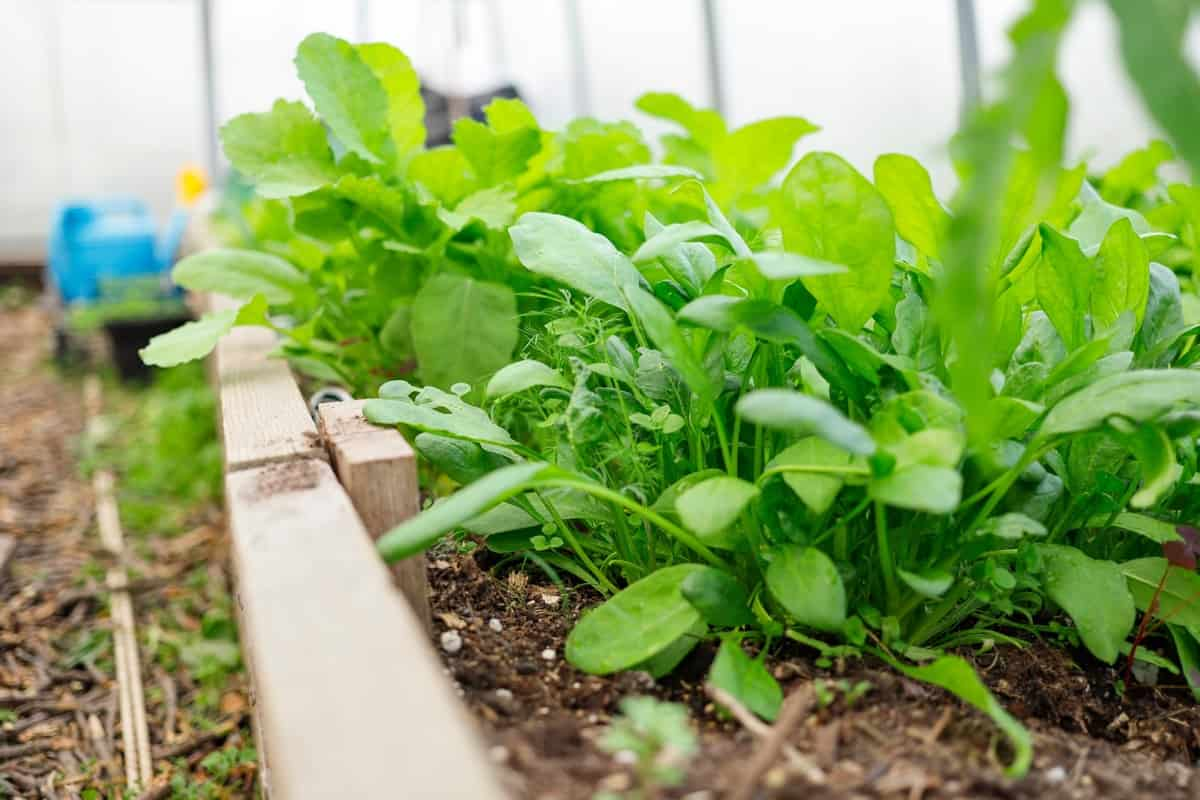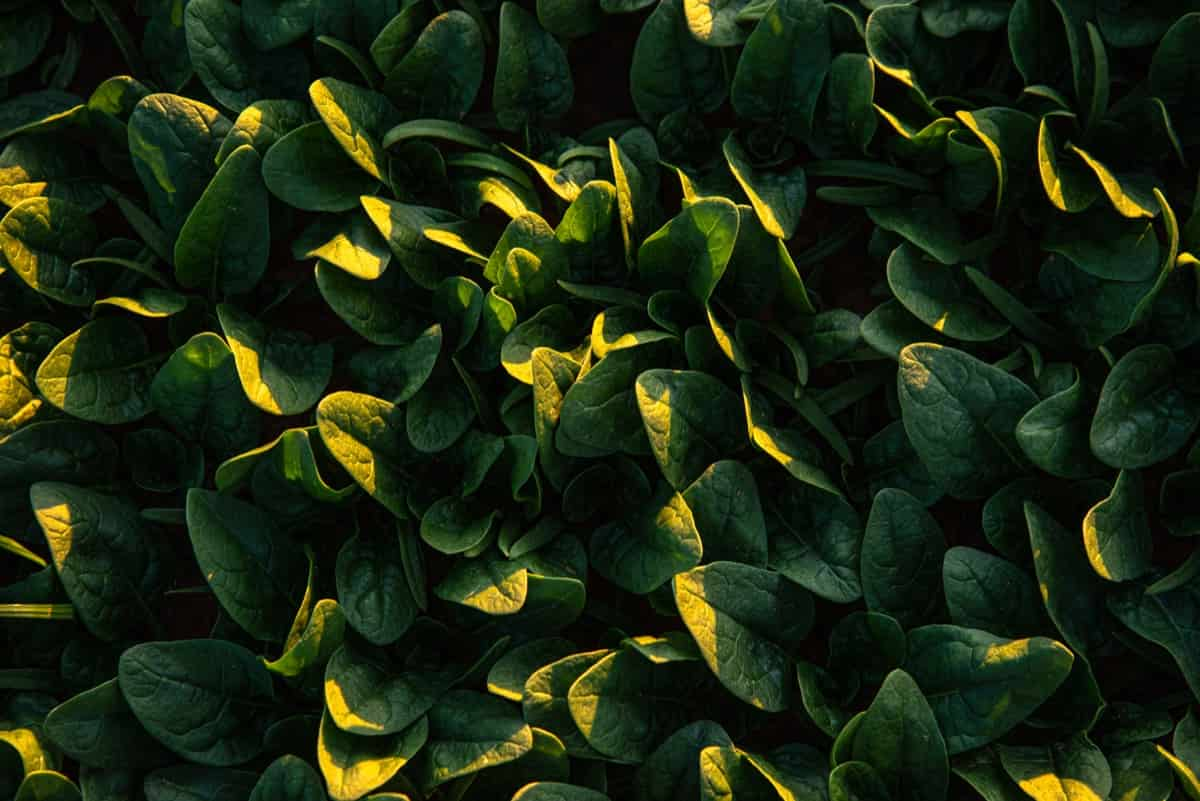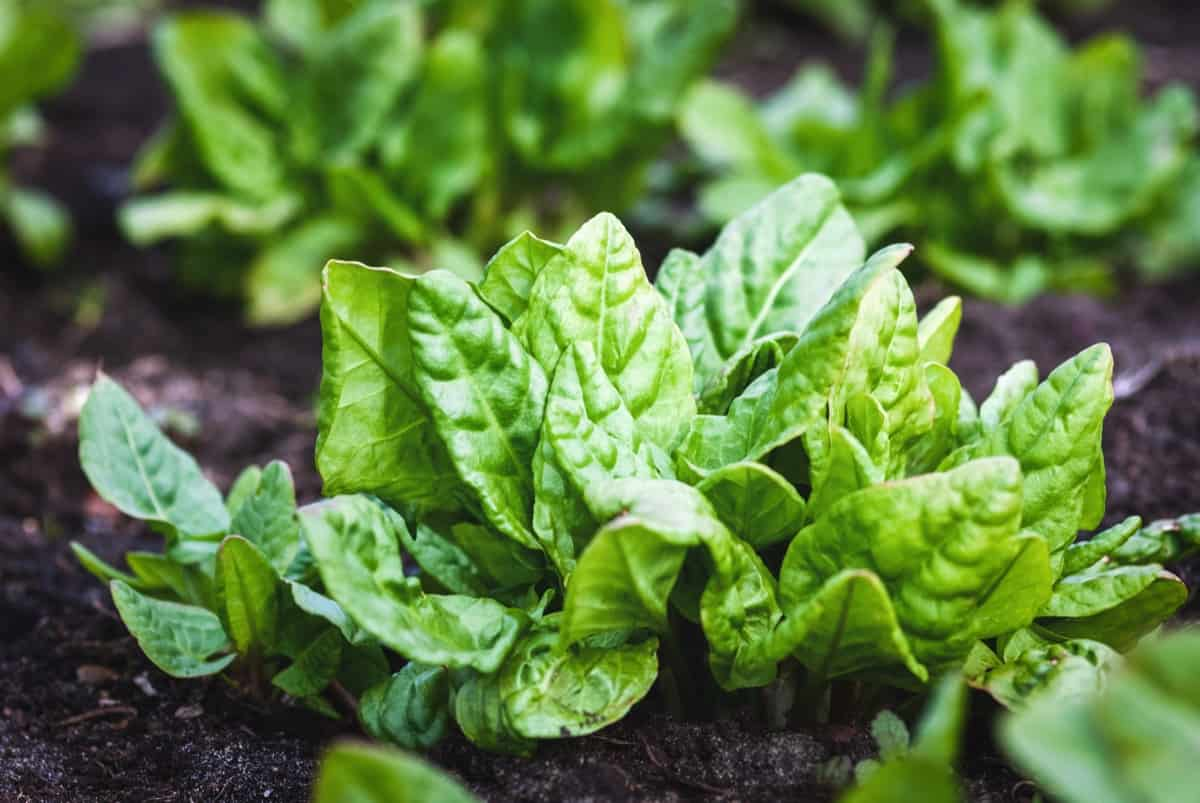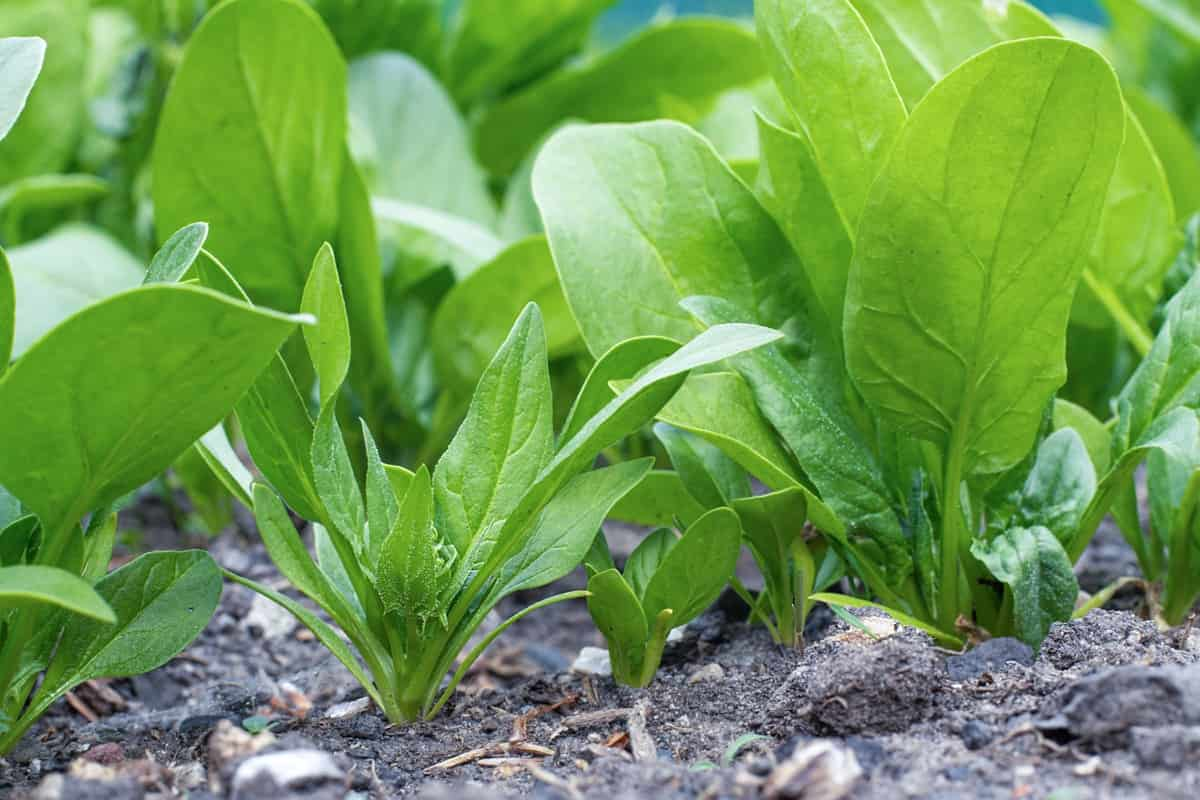Spinach bolting can be a frustrating problem for gardeners, but it can be prevented with the right knowledge and proactive measures. By understanding the causes of Spinach bolting, such as temperature fluctuations, day length, and nutrient imbalances, gardeners can take steps to create optimal growing conditions for their Spinach plants.

How do you know when Spinach is bolting? Bolting in Spinach refers to the process where the plant starts producing flowers and goes into reproductive mode. As the flowering stage progresses, the leaves of the Spinach plant become bitter and tough, making them less desirable for consumption. The focus of the plant’s growth shifts towards developing tall stalks with small yellow flowers at their tips. These flowers are followed by seed pods that contain Spinach seeds.
What is Spinach Bolting and How to Identify It?
Spinach bolting refers to the process when Spinach plants prematurely produce flowers and seeds instead of focusing on leaf growth. This often happens due to environmental factors such as temperature fluctuations or changes in daylight hours. What Happens When Spinach Bolts? One of the common Spinach bolting signs is the elongation of stems, which results in tall and spindly plants. The leaves also tend to become bitter and less flavorful. Another telltale sign is the formation of flower buds at the center of the plant. These buds will eventually open into small white or yellow flowers if left unchecked.
Causes of Spinach Bolting and How to Prevent It
Spinach bolting, the premature flowering of Spinach plants, can be frustrating for gardeners. Understanding the causes and taking preventative steps can help ensure a bountiful harvest. One common cause of Spinach bolting is high temperatures. When exposed to prolonged heat, Spinach plants go into survival mode and produce flowers in an attempt to reproduce before they perish. Spinach is a cool-season crop that thrives best in mild temperatures, typically between 15°C to 21°C.
In case you missed it: Growing Spinach from Seed to Harvest: Check How this Detailed Guide Helps Beginners at Home, and Outdoors

Spinach bolting temperature is above 21°C. Another factor that triggers Spinach bolting is day length. Spinach is a cool-season crop that prefers shorter days and longer nights. As daylight hours increase, it signals the plant to bolt. Choosing slow-bolting varieties bred specifically for your region can help mitigate this issue. Inadequate nutrition can also contribute to Spinach bolting. Nutrient deficiencies or imbalances may stress the plants and prompt them to flower prematurely.
Ensure your soil has sufficient nitrogen, phosphorus, and potassium levels by conducting regular soil tests and amending accordingly. Watering practices play a crucial role as well. Inconsistent watering or allowing the soil to become too dry between waterings can stress the plants and trigger bolting. Keep soil moist throughout the growing season. Pests such as aphids or flea beetles can damage Spinach leaves, causing stress that leads to bolting.
Implement pest control measures like using organic insecticides or practicing companion planting with pest-repellent herbs like Basil or Marigold. Overcrowding in garden beds can result in competition for resources among nearby plants leading them toward reproductive growth earlier than expected. Proper spacing between seedlings allows for adequate airflow and nutrient uptake from the soil while reducing crowding-related stressors.
Understanding the Process of Spinach Bolting
Spinach bolting is a natural process when plants transition from vegetative to reproductive. This phenomenon usually happens when temperatures rise, signaling to the plant that it’s time to produce seeds and continue its life cycle. Bolting in Spinach is triggered by various factors, including high temperatures, long daylight hours, overcrowding of plants, and nutrient deficiencies. Providing optimal growing conditions for your Spinach plants is crucial to prevent bolting or delay its onset as much as possible.
In case you missed it: Best Fertilizer for Spinach: Homemade, Natural, Organic, NPK, and Schedule

By understanding why Spinach bolts and implementing preventative measures such as proper cultivation techniques and environmental control methods like providing shade during hot periods or utilizing row covers in colder climates, you can maximize your chances of enjoying a bountiful harvest of tender leaves before your plant’s bolt. Can You Eat Bolted Spinach? You’ve noticed that your Spinach has bolted, and now you’re wondering if it’s still safe to eat. Well, the good news is that you can still eat bolted Spinach.
While the leaves may not be as tender and flavorful as before bolting, they are still edible. What to Do With Bolted Spinach? Once your Spinach has bolted, knowing what steps you can take is important. While the taste and texture of bolted Spinach may not be as desirable for fresh consumption, there are still ways you can make use of it. One option is to harvest the bolted Spinach leaves and use them in cooked dishes. Another idea is to let the bolted Spinach go through its life cycle and produce seeds.
These seeds can be collected and saved for future plantings. What to Do When Spinach Flowers? Spinach flowers are a natural occurrence that can happen when the plant reaches the end of its lifecycle. While it may be disappointing to see your Spinach plants go to seed and produce flowers, there are still ways to use them. Instead of discarding your flowering Spinach plants, you can harvest the seeds for future planting.
How to Recognize Bolting in Spinach Plants
One of the key factors in preventing Spinach bolting is being able to recognize it early on. By understanding the signs, you can promptly prevent your Spinach plants from going to seed prematurely. What Does Bolting Spinach Look Like? When Spinach bolts, it sends up tall stalks with small flowers. These flowers eventually become seed pods containing the Spinach plant’s future offspring. While this might seem like an exciting phase for the plant, it can be frustrating for gardeners who want to harvest delicious leafy greens.
Another sign to watch for is leaf shape and texture. Bolting Spinach leaves tend to become thinner and more elongated than their usual rounded shape. Additionally, they may develop a bitter taste as they divert energy towards flowering instead of producing tasty leaves. Pay attention to any sudden growth spurts in your Spinach plants as well. Bolting often leads to accelerated growth, causing the plant size to increase rapidly within a short period.
Keep an eye out for temperature fluctuations, as they play a significant role in triggering bolting. Spinach prefers cool temperatures between 15-21°C. Exposure to prolonged periods of heat or extreme cold snaps can cause stress on the plant and induce premature flowering. Spinach is a resilient and adaptable plant, but once it starts bolting, its focus shifts from leaf production to flowering and seed production. Will Spinach Grow Back After Bolting?
In case you missed it: How to Grow Spinach Without Seeds

When Spinach bolts, the energy previously directed toward leaf growth is redirected toward reproductive efforts. The spinach plant sends up a tall flower stalk with small yellow flowers. As this process unfolds, the quality and taste of the leaves deteriorate rapidly. Unfortunately, once Spinach has bolted, there’s little chance of it regrowing into its former leafy glory. You can still salvage some use from your bolted Spinach plants by harvesting the leaves before they become too bitter or tough.
How to Prevent Spinach Bolting Prematurely
Bolting occurs when the plant prematurely sends up a tall flower stalk, signaling the end of its productive life cycle. How Do I Keep My Spinach From Bolting? Spinach bolting can be a frustrating experience for any gardener. It’s disheartening to see your Spinach plants go from healthy, vibrant leaves to tall, flowering stalks seemingly overnight. There are steps you can take to prevent your Spinach from bolting prematurely.
How to Prevent Spinach From Bolting? First and foremost, selecting the right variety is crucial in preventing premature bolting. Certain Spinach cultivars are more prone to bolting under certain conditions. Choose varieties that are known for their bolt-resistant properties. Additionally, proper timing is crucial when it comes to planting Spinach. Planting too early or late can increase the risk of bolting.
Start sowing seeds at a time when temperatures are cooler and stable, typically during early spring or fall. Providing optimal growing conditions is essential for preventing bolting as well. Spinach thrives in moist soil with good drainage and partial shade. Regular watering should be done evenly throughout its growth cycle. Managing temperature fluctuations is also vital for avoiding premature bolting.
Extreme heat can trigger this process even if other conditions are favorable. Consider using shade cloth or row covers during hot periods to provide some relief from intense sunlight. Regularly monitoring your plants is necessary for identifying any signs of impending bolting early on so that appropriate action can be taken promptly. Look out for changes in leaf texture and shape and an accelerated growth rate, which could indicate forthcoming bolt formation.
Factors That Trigger Spinach Bolting and Their Management
Spinach bolting, the premature flowering and seed production of Spinach plants, can be triggered by various factors. Understanding these triggers is crucial in managing and preventing bolting in your Spinach crop. One significant factor that can trigger Spinach bolting is temperature fluctuations. Choosing an appropriate planting time for your Spinach is important to manage this based on the local climate conditions.
Another factor that contributes to Spinach bolting is day length or photoperiod. Spinach is a cool-season crop that prefers shorter days for optimal growth. You can select bolt-resistant varieties or provide shading during extended daylight to prevent this. Nutrient deficiencies or imbalances can also trigger bolting in Spinach plants.
Insufficient nitrogen levels in the soil may signal stress to the plant, leading it to bolt prematurely. Regular soil testing and proper fertilization practices are essential for maintaining adequate nutrient levels and preventing nutrient-related triggers of bolting. Stressful growing conditions such as drought or overcrowding can also induce Spinach bolting. Providing consistent moisture through regular watering and ensuring proper spacing between plants will help minimize stressors on the crop.
In case you missed it: 8 Easy Seeds to Start for Beginners: For Flowers, Fruits, Herbs, and Vegetables

Identifying Early Signs of Spinach Bolting for Timely Intervention
Spinach bolting can be frustrating for gardeners, but you can prevent it from derailing your harvest with early intervention. By identifying the early signs of Spinach bolting, you can take timely action to ensure your plants continue to thrive. One of the first indicators of impending bolting is the appearance of elongated stalks or stems.
Additionally, if you notice small clusters of leaves starting to form at the center of the plant, this is another red flag. Another clue lies in the texture and taste of the leaves. As Spinach begins to bolt, its leaves become thicker and more bitter in flavor. A loss of tenderness often accompanies this change in texture and taste.
Controlling Spinach Bolting Through Proper Cultivation Techniques
It’s important to choose the right variety of Spinach for your climate. Some cultivars are more prone to bolting than others, so opt for varieties specifically bred for bolt resistance. Next, pay attention to planting times. Start seeds early in spring when temperatures are cool, or consider fall plantings. Provide your Spinach plants with adequate spacing. Crowding can induce stress on the plants, causing them to bolt prematurely.
Aim for about 6-8 inches between each plant in rows spaced around 12-18 inches apart. Maintaining consistent moisture levels is essential too. Keep the soil evenly moist but infrequently rather than shallowly and frequently. Mulching around the plants will retain moisture and regulate temperature fluctuations. Regularly monitor nitrogen levels in the soil, as excessive nitrogen can encourage rapid growth leading to bolting.
Adding compost or well-balanced organic fertilizers will provide a steady release of nutrients without promoting excessive vegetative growth. Pay attention to day length sensitivity if you live in an area with significant seasonal variation in daylight hours. Certain varieties may be more tolerant of shorter or longer days before they initiate flowering.
In case you missed it: Natural and Organic Ways to Treat Herbs Leaf Curl: Fix With Effective Home Remedies

Conclusion
Spinach bolting can be a frustrating problem for gardeners, but it can be successfully managed with the right knowledge and preventive measures. By understanding what causes Spinach bolting and taking preventive steps, you can enjoy a bountiful harvest of fresh Spinach throughout the growing season. Remember that temperature fluctuations, long daylight hours, overcrowding, nutrient deficiencies, and stress are all factors that contribute to Spinach bolting.
You can reduce the risk of premature flowering by providing optimal growing conditions, such as cool temperatures and adequate spacing. Additionally, choosing bolt-resistant Spinach varieties and regularly monitoring your plants for early signs of bolting will help you take steps to prevent it from occurring. If you notice any signs of bolting in your Spinach plants, promptly remove them to prevent further spread.
- Broccoli Seed Germination and Selection
- Asparagus Seed Germination and Variety Selection
- Seasonal Flower Gardening: Best Practices for Spring, Summer, Fall, and Winter
- How to Grow Hibiscus from Flower
- Plantation Ideas for Home Decoration: A Beginners Guide
- Flower Garden Designs and Layouts for Beginners
- Planting and Spacing Techniques in Papaya: A Beginner’s Guide
- Growing Gold: Essential Techniques for Planting Pineapples
- How to Make Kalanchoe Plant Bushy: Home Remedies and Solutions
- 11 Reasons Why Your Gardenia is Not Blooming: Home Remedies and Solutions
- Eco Elegance: The Guide to Designing a Drought-Tolerant Landscape
- Gardening on a Slope: Strategies for Hillside Landscaping
- Nourish and Flourish: Top Organic Mulches for Thriving House Plants
- Everything You Want to Know about Indian Mogra Flower: Discover Uses and Growing
- Green Thumb Success: Expert Tips for Cultivating Greenhouse Pumpkins All Year Round
- Maximize Growth & Flavor: The Ultimate Guide to Companion Planting in Herb Gardens
- How to Control Rhododendron Problems Naturally: Home Remedies and Organic Ways to Fix Them
- Natural Magic: The Remarkable Benefits of Cinnamon for Plants
- Best Steps to Revive Dying Tulip with Natural and Organic Treatment
- 10 Reasons Why Your Angel Trumpet is Not Blooming: Remedies and Treatment
- How to Fix Periwinkle Leaf and Flower-Related Problems: Natural Remedies and Solutions
- How to Fix Zinnias Leaf and Flower Problems: Discover Natural and Home Remedies
- Organic Steps to Induce Lemon Tree Flowers: A Comprehensive Guide
- Bloom Booster: Crafting the Perfect Homemade Bougainvillea Fertilizer
- Optimizing Growth: A Guide to Applying NPK Fertilizer for Potted Plants
- 10 Best Homemade Fertilizers for Rubber Plant: DIY Recipes and Application Method
- How to Boost Female Pumpkin Flowers: Effective Steps for More Flowers and High Yields
- Transform Your Indoor Garden: Top Benefits of Pink Salt for Houseplants
- 10 Best Homemade Fertilizers for Peacock Plants (Calathea): Easy DIY Guide
- Unlock Blooms: 9 Reasons Why Your Potted Chrysanthemum is Not Blooming
- 8 Reasons Why Your Potted Hibiscus is Not Blooming: Fix it with Simple Solutions
- Unlock Blooms: 9 Key Reasons Your Potted Frangipani Won’t Flower
- 10 Reasons Why Is My Ice Plant Not Blooming: Remedies and Treatment
- 10 Reasons Why My Potted Hydrangea Not Blooming: Treatment and Remedies
- 10 Reasons Why is My Wisteria Not Blooming: Remedies and Treatment
- 10 Reasons Why is My Goldfish Plant Not Blooming: Remedies and Treatment